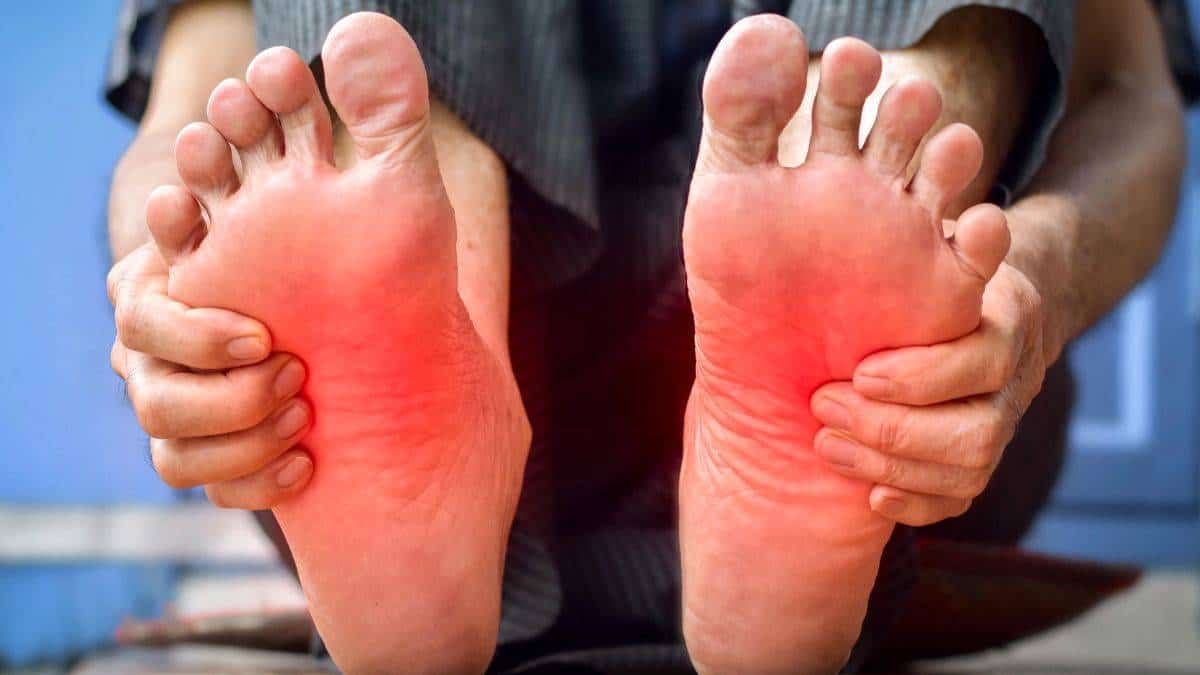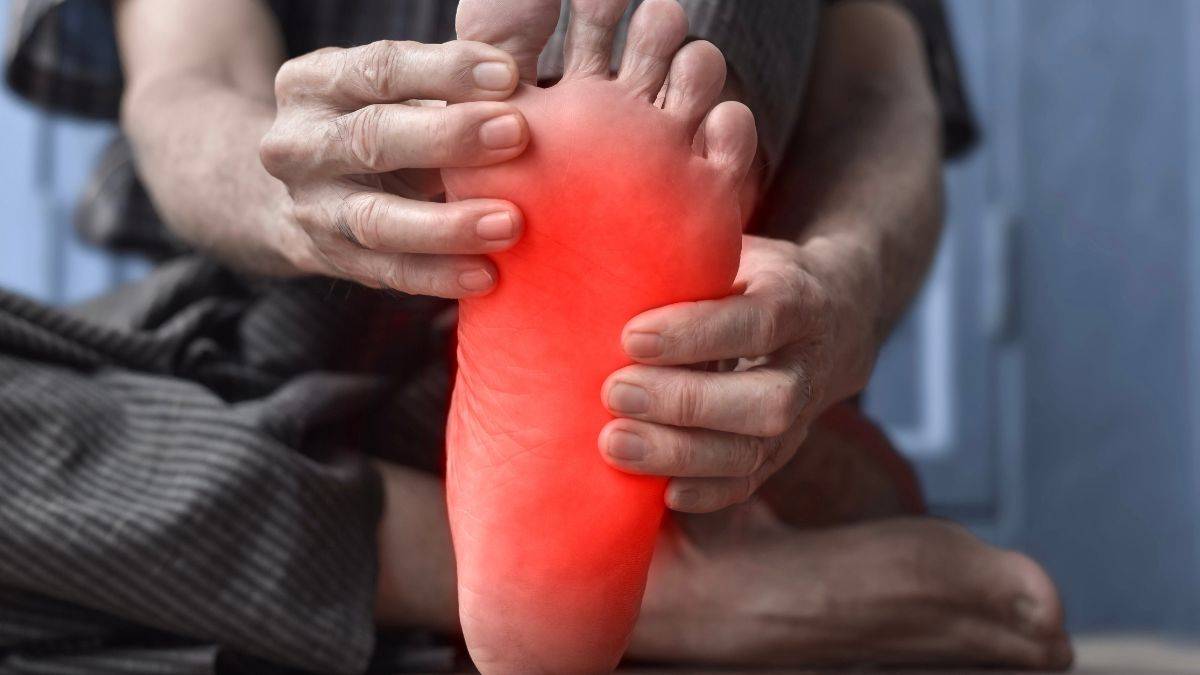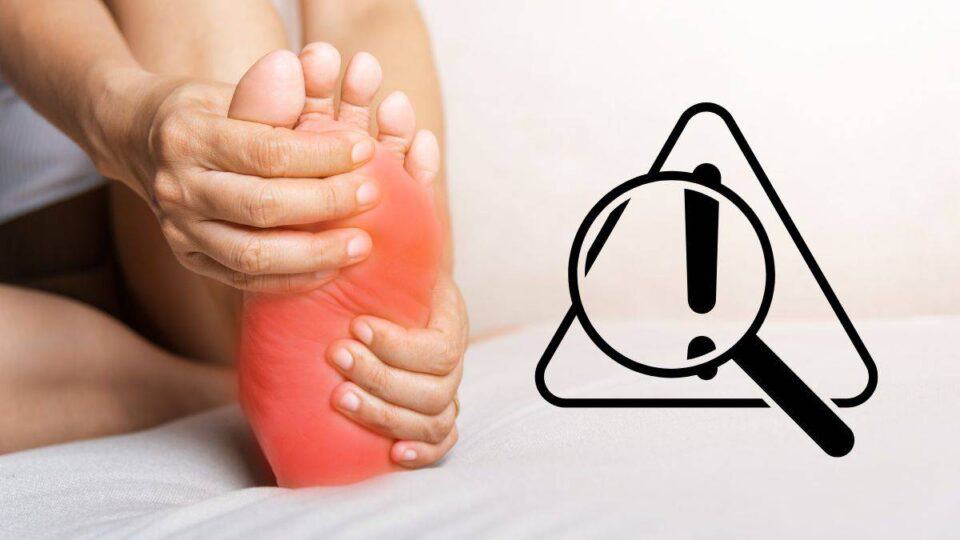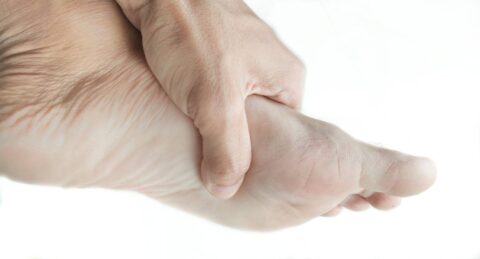I’ve seen how early detection of neuropathy can make a big difference in people’s lives. It’s a complex issue, but the good news is that we have some really exciting diagnostic tools and treatment options to catch problems early and prevent major complications. Let me guide you through the knowledge of nerve health and share how we can work together to keep your nerves functioning at their best.
Key Takeaways
- Early detection of neuropathy is crucial for effective management and prevention of complications
- Advanced diagnostic techniques, including nerve conduction studies and imaging, play a vital role in identifying neuropathy in its early stages
- A multidisciplinary approach combining lifestyle modifications, regular screening, and emerging treatments offers the best outcomes for patients at risk of neuropathy
Table of Contents
- Understanding Neuropathy
- Signs and Symptoms of Early Neuropathy
- Pathophysiology of Neuropathy Development
- Clinical Examinations
- Nerve Conduction Studies
- Advanced Imaging Techniques
- Innovative Diagnostic Approaches
- Prevention and Early Intervention Strategies
- Treatment Options for Early-Stage Neuropathy
- Complementary therapies
- Challenges in Early Neuropathy Detection
- The Role of Multidisciplinary Care in Early Neuropathy Management
- Future Directions in Early Neuropathy Detection
- FAQs
- Conclusion
Understanding Neuropathy
Imagine your body’s nervous system as an intricate network of highways, constantly sending signals back and forth. Now, picture neuropathy as a series of roadblocks on these highways, disrupting the flow of information. That’s essentially what we’re dealing with when we talk about nerve damage.
Early detection of neuropathy is like having a top-notch traffic monitoring system. It allows us to spot these roadblocks before they cause major traffic jams in your body. In my practice, I’ve seen how crucial this early intervention can be in preventing long-term complications and improving quality of life.
Neuropathy isn’t a one-size-fits-all condition. It’s more like a family of related disorders, each with its own quirks and characteristics. Let’s break it down:
- Diabetic polyneuropathy (DPN): This is the most common type I see in my practice. It’s like a slow-burning fire that starts in the longest nerves of your body – typically in your toes and feet – and gradually works its way up.
- Peripheral neuropathy: Think of this as a general term for any nerve damage outside your brain and spinal cord. It can affect sensory nerves, motor nerves, or both.
- Small fiber neuropathy: This sneaky variety primarily affects the small nerve fibers responsible for pain and temperature sensation. It’s like having faulty wiring in your body’s thermostat and pain alarm system.
The causes of neuropathy are as diverse as cities itself. Type 2 diabetes mellitus (T2DM) is a major player, but I’ve also seen cases triggered by vitamin deficiencies, exposure to toxins, and even certain medications. It’s crucial to remember that anyone can potentially develop neuropathy, which is why early detection is so important.1
Precision Healing with Summus Class IV Laser
Experience targeted pain relief with our advanced Summus Class IV Laser Therapy. Discover how this cutting-edge treatment could accelerate your healing process.
Signs and Symptoms of Early Neuropathy
Catching neuropathy early is like detecting a small leak before it turns into a flood. Here are some early warning signs to watch out for:
Sensory symptoms:
- Numbness or tingling, especially in your hands and feet
- Burning or shooting pain that seems to come out of nowhere
Motor symptoms and Autonomic symptoms:
- Changes in sweating patterns
- Digestive issues or bladder problems
- Muscle weakness that makes simple tasks feel like a workout
- Reflexes that are slower than a traffic jam
Pathophysiology of Neuropathy Development
Now, let’s dive a bit deeper into what’s happening beneath the surface when neuropathy develops. It’s a complex process, but understanding it can help us catch it early.
Axonal damage and demyelination are two key players in this process. Imagine your nerves as electrical wires. The axon is the core of the wire, and myelin is the insulation. When either of these gets damaged, it’s like having faulty wiring – things just don’t work right.
Oxidative stress and inflammation This causes chaos in your nervous system. They can damage nerve cells and interfere with their normal function.
Vascular and metabolic factors also play a role. Poor blood flow to the nerves– The nerves don’t get the nutrients they need to stay healthy.
Finally, neurotrophic factors – think of these as the cheerleaders for your nervous system – can become depleted, leaving your nerves without their usual support system.
Understanding these processes helps us develop more targeted approaches for intervention.

Clinical Examinations
Think of these as the detective work we do right in the office. We’re looking for subtle clues about how your nerves are functioning.
Neurological Examination
This is a comprehensive check-up for your entire nervous system. I’ll test your reflexes, muscle strength, and sensation to get a clear picture of your nerve health. Don’t worry, it’s completely painless – I’ll just have you perform a few simple movements and tests.
Nerve Conduction Studies
These tests are like to traffic reports for your nerves. By measuring how quickly and strongly electrical signals travel through your nerves, we can get valuable insight into their function.
Electromyography (EMG)
An EMG examination looks at the communication between your muscles and nerves. It helps us identify any disruptions or abnormalities in this crucial neural signaling.
Nerve Conduction Velocity (NCV)
With an NCV test, we place electrodes on your skin and deliver small electrical impulses. By measuring how fast these impulses travel along your nerves, we can detect any slowing or blockages that may indicate neuropathy.
Advanced Imaging Techniques
In addition to the hands-on evaluations, we also have sophisticated imaging tools at our disposal to get an even deeper look at your nerves.
Optical Coherence Tomography (OCT)
OCT is a non-invasive imaging technique that uses light waves to capture incredibly detailed images of the tiny nerves in your eyes. This can reveal subtle changes that may be an early sign of neuropathy.
Magnetic Resonance Neurography
This specialized MRI technique focuses specifically on visualizing the nerves throughout your body. It allows us to see the structure and integrity of your nerves in remarkable detail, helping us identify any abnormalities.
Quantitative sensory testing
These tests measure how well you can feel different sensations.
- Vibration perception threshold: We use a tuning fork to see how well you can feel vibrations. It’s like testing how well you can feel your phone vibrating in your pocket.
- Thermal threshold testing: This checks how sensitive you are to hot and cold. It’s like seeing how quickly you’d notice if your coffee was too hot.
Skin biopsy and nerve fiber density analysis
This might sound scary, but it’s actually a tiny procedure. Doctors take a small sample of your skin to look at the nerve fibers under a microscope. It’s like counting the number of wires in a very small section of cable.
- Emerging biomarkers: These are cutting-edge tests that look for specific substances in your blood that might indicate nerve problems.
- Interleukin-6 (IL-6): This is a substance in your blood that can indicate inflammation. High levels might suggest nerve damage.
HbA1c levels
This test gives us a picture of your average blood sugar levels over the past few months. It’s like a report card for how well you’ve been managing your blood sugar.2
Innovative Diagnostic Approaches
Corneal Confocal Microscopy
The corneal confocal microscopy technique is quite remarkable – it allows us to directly visualize the tiny nerve fibers in the cornea of the eye. It’s almost like getting a real-time window into the state of the peripheral nervous system. By examining the density and morphology of these corneal nerve fibers, we can detect even very subtle changes that may indicate the early stages of neuropathy. It’s a non-invasive way to gain valuable insights without having to do more invasive testing.
Sudomotor Function Tests
The sudomotor function tests are also really intriguing.
Our sweat glands are innervated by the small autonomic nerve fibers, so examining how well they’re able to respond and produce sweat can be an early marker of nerve dysfunction. These tests can pick up on small fiber neuropathy before it progresses to more overt symptoms. It’s a clever way to indirectly assess the health of the peripheral nerves.
Heart Rate Variability Analysis
The heart rate variability analysis is a really neat technique.
Our heart rate isn’t perfectly steady – there are slight, natural variations in the time between each heartbeat. By looking at the patterns and fluctuations in this heart rate variability, we can get insights into the function of the autonomic nervous system. This can reveal imbalances or abnormalities that may be an early sign of neuropathic changes.3
Cutaneous Silent Period Assessment
The cutaneous silent period assessment4 is new to me, but it sounds like a valuable way to specifically evaluate the function of those small, unmyelinated nerve fibers. Being able to objectively test the integrity of these fibers can help differentiate between different types of neuropathy and guide the most appropriate treatment approach.
It’s really exciting to see how the field of neuropathy diagnosis is evolving with all these innovative techniques. They allow us to detect problems earlier, get a more nuanced understanding of what’s going on, and ultimately provide better, more targeted care for patients.
Prevention and Early Intervention Strategies
In my practice, we use specialized neuropathy instruments to carry out detection before the emergence of noticeable symptoms. This proactive approach allows us to start treatment early, potentially preventing or slowing the progression of neuropathy.
Here are some strategies I recommend to my patients:
Lifestyle modifications
- Glycemic control: If you have diabetes, keeping your blood sugar in check is obviously crucial.
- Regular exercise: It’s like giving your nerves a daily tune-up.
- Healthy diet: Feed your nerves the nutrients they need to stay healthy.
- Quitting smoking and moderating alcohol intake: These habits can be toxic to your nerves.
Regular screening for high-risk individuals
If you have diabetes or other risk factors, regular check-ups are a must.
Patient education and self-monitoring
I always say, “You’re the expert on your body.” Learn what’s normal for you and what’s not.
Foot care and injury prevention
This is especially important if you have diabetes. Treat your feet like royalty!
Treatment Options for Early-Stage Neuropathy
Catching neuropathy early opens up a world of treatment options. Here’s what some people might consider:
- Pain management: This could include medications like antidepressants anti-seizure drugs, or topical treatments.
- Addressing underlying causes: If we can identify what’s causing the neuropathy, we can often treat it directly.

Complementary therapies
Physical therapy
This can help maintain muscle strength and improve circulation.
Heat therapy
When it comes to managing pain and improving circulation, I’m all about heat therapy. You won’t find any cold treatments in my practice. Heat isn’t just comforting; it’s a powerful healing tool that increases blood flow, relaxes muscles, and soothes nerves.
Curious about why I avoid ice? I’ve written an article called “Ice vs. Heat: Why Ice Might Be Your Injury’s Worst Enemy.” It challenges the common belief that ice is best for injuries and explains why heat often works better. If you want to understand my approach better, give it a read. In my experience, supporting your body’s natural healing processes is key for neuropathy and other conditions, and heat therapy does just that.
Class IV Laser
This is a game-changer in our practice. Class IV laser therapy offers a non-invasive, drug-free approach to managing neuropathy, especially for those dealing with post-chemotherapy effects. The high-intensity light energy penetrates deep into the tissues, stimulating healing and regeneration at the cellular level.
Challenges in Early Neuropathy Detection
Despite our best efforts, early neuropathy detection isn’t always straightforward. Some challenges we face include:
- Variability in symptom presentation: Neuropathy can be tricky, presenting differently in different people.
- Limitations of current diagnostic tools: While we have many great tools, none are perfect.
- Patient awareness and compliance issues: Early symptoms can be easy to dismiss or overlook.
The Role of Multidisciplinary Care in Early Neuropathy Management
In my experience, a team approach works best for managing neuropathy. This might include:
- Collaboration between specialists: As a chiropractor, I often work closely with neurologists, endocrinologists, and other specialists.
- Patient-centered care models: You’re the most important member of your healthcare team.
Future Directions in Early Neuropathy Detection
The future of neuropathy detection is exciting. We’re seeing advancements in diagnostic technology, personalized medicine approaches, and even the potential for artificial intelligence in screening. Who knows? In the future, we might even see gene therapy or regenerative medicine playing a role in neuropathy treatment.
Precision Healing with Summus Class IV Laser
Experience targeted pain relief with our advanced Summus Class IV Laser Therapy. Discover how this cutting-edge treatment could accelerate your healing process.
FAQs
How can a chiropractor help with neuropathy?
Is chiropractic care safe for neuropathy patients?
What is early neuropathy detection?
Why is early detection of peripheral neuropathy important?
What are the symptoms of peripheral neuropathy?
Conclusion
Early detection of neuropathy is crucial for effective management and prevention of complications. By combining advanced diagnostic techniques with a comprehensive approach to care, we can catch neuropathy early and intervene before it becomes a major problem.
As your chiropractor, I’m committed to staying at the forefront of neuropathy detection and treatment. Whether you’re dealing with diabetic neuropathy, post-chemotherapy neuropathy, or looking to avoid surgery with spinal decompression treatment, I’m here to help.
Ready to take control of your nerve health? Don’t wait for symptoms to become severe. Schedule a consultation with me today, and let’s work together to keep your nervous system running smoothly.
Blog Disclaimer: The information provided on The BodyFix Chiro blog is for general informational and educational purposes only and is not intended as medical advice. These articles reflect our opinions and experiences but should not be used to diagnose or treat any health conditions. Always consult with your physician, chiropractor, or other qualified healthcare provider before starting any new treatment, exercise program, or making changes to your health routine. Any actions you take based on information from this blog are entirely at your own risk, and The BodyFix Chiro and its contributors disclaim any liability for the decisions you make based on this information.




